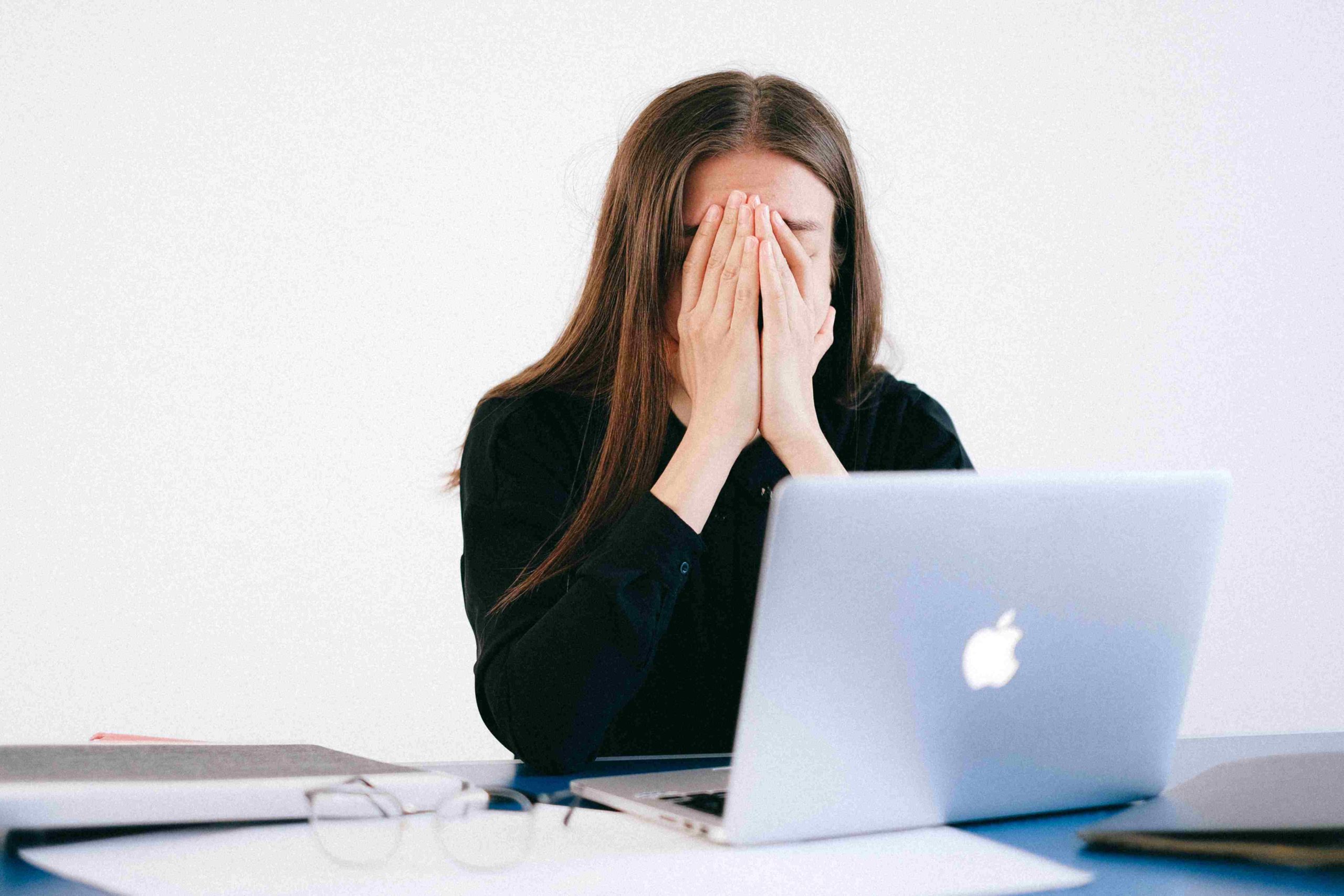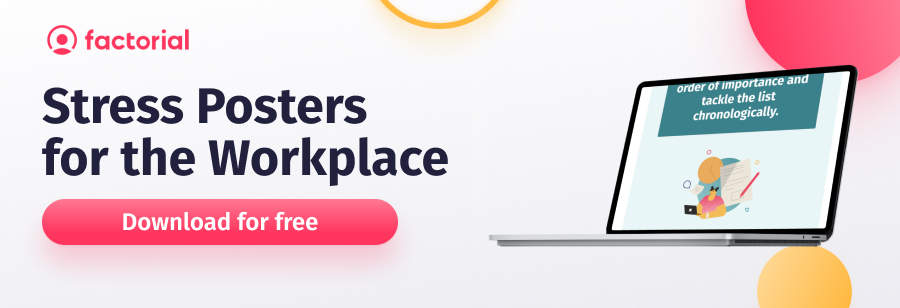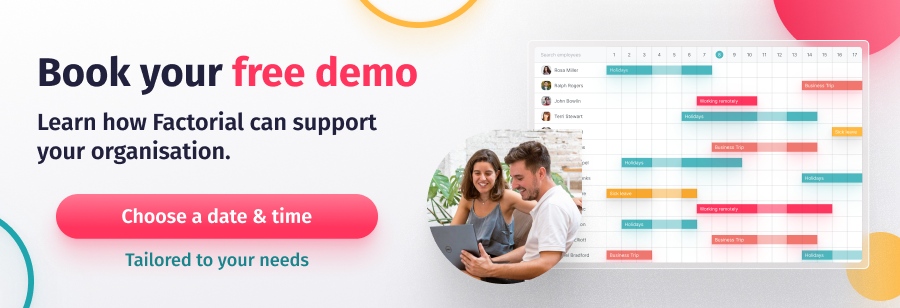In our latest Panel Discussion, three lovely ladies and experts on mental health revealed their inside knowledge on dealing with stress and anxiety at the workplace and shared their own coping mechanisms for handling anxiety. Their names are Amy Polly, Camila Rogers, and Amy McKeown.
Amy McKeown is an award-winning mental health and well-being consultant who coaches organisations of all sizes to build innovative strategies. Camilla Rogers is the founder of fifty50 Coaching whose passion is to help HR leaders CEOs and Founders to create a mentally fit workplace. And Amy Polly is a mindfulness teacher as well as a mental health and neurodiverse diversity speaker, advocate and campaigner.
Here you can read a short summary of the main concepts and questions they discussed during our live panel discussion.
How employees deal with stress and anxiety in the workplace
When we’re thinking about stress, we are aware that some stress can be helpful, because it can help us to be focused and efficient. But we need to be able to notice when it is probably not very helpful. A lot of mindfulness is about self-awareness and so being aware of when stress is getting too much is really important.
Something that we talk about a lot is knowing your stress indicators so actually figuring out what indicates stress for you and knowing that’s going to be different for everybody. For me, it is something physical because I get tension headaches and an achy neck. However, it could be something mental, like a lack of focus or feeling emotional. Getting to know those indicators are really helpful because if we can notice early hopefully we can do some things about it early. The other thing that I focus on often when teaching is thinking about questioning our reality. Our mind oftentimes likes to make up a lot of our world and we fill in the gaps a lot. Our brain likes to do that so sometimes especially if you’re thinking about the one thing that might be stressing us out. – Amy Polly
When feeling a bit stressed you need to ask yourself what are the things that maybe you can control or that you can change. So you actually think about where you can put your energy or maybe you need to ask for some help. We start with the stress indicators and then we move on to what can we do about this. Then we can move on to: “What are my coping mechanisms? What can I do to alleviate some of my stress?” And that’ll be different for everybody.

It’s really important to get to know yourself and what works for you. Somebody might alleviate their stress by going to the gym. So it’s really about learning what works for you because we’re all different and the thing with stress is that little pockets of rest are really vital. Understanding your healthy strategies and what you need is really where we need to start and the more that we do that the easier it becomes to notice early and then put some of those things in place.
Just because we’re leaders or CEOs or founders doesn’t mean we’re immune to mental health and it doesn’t mean that we’re not going to be faced with stress and anxiety. We’re actually going to find ourselves all the tools and techniques and all the knowledge on how to handle this, so I think the first thing to acknowledge is that we are all human and no matter what position any of us are in within the organisation, we are all very much susceptible to that stress. – Camilla Rogers
So knowing your own red flags and understanding your own kind of disposition and your resilience around some of these kinds of problems are quite important. But with regards to the workplace on the leadership front, there’s a lot of inconsistency around and that’s really natural because we live in a world of lots of promotions, lots of movements, lots of changing courses and directions with careers and you’ve got a huge amount of people in leadership roles or in management roles specifically that don’t have a huge level of training around people management.
And that can create kind of quite a lot of difficulties within an organisational ecosystem in order how to navigate when things get tough: tough for you as the manager, tough for your team, how do they talk to you about it, how do you recognise that there’s a problem in the first place. It’s all amplified by a hybrid working arrangement when you don’t have eyes on the team so you’re asking yourself how do you know if they’re struggling if you haven’t created a culture of permission where people can talk.
So I think first things first is that we need to take a step back and observe where we are personally. And a lot of the leaders, managers and CEOs are genuinely in the same boat needing to understand what their status quo is and then it’s about understanding about how can we have positive conversations and open up a narrative around what is traditionally a stigmatised subject. How can we create a bit of normality around this and acknowledge that everyone’s struggling? Loads of stuff is going on so it’s really difficult to feel comfortable talking about some of your deep problems when you’re in a working environment. And that can lead to stress and anxiety and it can exacerbate it further so if you’re feeling stressed and then you’re stressing about being stressed. So, my initial perception is to take a step back, understand where I’m at as a leader or a manager, try and do some sort of self-audit and also then construct one on the team: get the conversation open and start understanding where you’re starting from. Only then you can start building a trajectory or pathway towards the implementation of different kinds of tools and techniques. – Camilla Rogers
What the employers experience and what they can do
Health is health, whether it’s mental physical or emotional or whatever, it’s our well-being, it’s our ability to show up every single day and be present. Presenteeism is the largest contributor to the costs around the workplace. Poor mental health is estimated at 56 billion dollars globally. According to a report by Deloitte, mental health is up 25 over the last five years. It’s a cost that hits employers in the pocket.
A really well-debated point is how much responsibility sits with the employer to own the mental health journey of the employee. I agree that it’s important to support your employees when you’re an employer, but you need to go part way along that Journey because it cannot purely sit with the employer and it cannot purely sit with the employee. I think there is a responsibility within employers especially employers who require a lot of um face time you know screen time, long working hours, high energy and high output. There’s a responsibility there that sits with the employer to support mental well-being absolutely. But I think telling people what to do is not the answer. – Camilla Rogers

Last year, the World Health Organisation mandated the use of an ISO standard and now there is a global ISO standard around psychosocial risk assessment. Health and mental health are covered in the UK under the Health and Mental Health Care Act of 1974, so it is a legal responsibility.
Legally, mental health is 50% the employee’s and 50% the employer’s responsibility, so it’s very very much the employer’s responsibility to take care of the employee’s mental health as well and that’s been tested in court. The health and safety clause was put in Stress Management standards in the 90s and all organisations need to comply with it. There is a lot of legislation: there’s a health and safety management standards which refer to workplace culture and you risk assess for six different aspects of stress within an organisation that is a risk assessment approach because that’s what the health and safety executive does.
What most people don’t realise is that stress is not a mental illness, stress is a state which when it’s extended can lead to mental illness or physical illness or to chronic illness. Stress in itself is not diagnosable. However, mental illness is. So I think a lot of organisations have gone and are going wrong when they’re encouraging employees to talk about mental health as part of destigmatisation and awareness which means that people know about mental health. So if someone tells you that they’ve got depression as part of a very well-intentioned mental health program, that means the organisation now knows that that person has depression which means that they have a legal responsibility to that person because they’ve disclosed right and where you have a chronic illness or something that goes on over a year it is then covered by the Equality Act. – Amy McKeown
Coping mechanisms for stress and anxiety
Mental health tips for the workplace
Having an employee assistance program isn’t a tick that needs to be put at the end of the day. We’ve looked at mental health and well-being and it is so much broader than that and obviously, we need all of these support mechanisms in place to make sure that we are documenting what we’re doing and people know where to go and we understand our shared responsibility.
The top mental health tips and coping mechanisms from our experts are the following:
- Have a mental health strategy on a company level
- Dedicate which department will deal with mental health
- Pay attention to the basic things that employees go through at work
- Detect the causes of stress and anxiety
- Teach employees about how their bodies and hormones work
- Educate your employees on how to take care of themselves and take breaks from work
To discover more about each of their opinion, follow the link below for the recording of this panel discussion.
Watch the Panel Discussion for more insights
About our panellists
About Amy McKeown
Amy McKeown is an award-winning health, mental health and well-being consultant. She coaches organisations of all sizes to build strategies which are both innovative and measurable, whilst providing unique expertise in implementing said strategies. Amy is also a respected thought leader within her field, sharing her advice regularly on LinkedIn and at speaker events such as Mad World.
About Camilla Rogers
Camilla is the Founder of fifty50 Coaching and her passion is to help HR leaders, CEOs and Founders create a mentally fit workplace. She has experienced first-hand the impact of a fast-paced, intense career path, and witnessed similar journeys of peers, clients and colleagues, which led her to see a gap in the market for a tailored and preventative approach to workplace mental fitness; one that helps employers to better understand their people and their needs.
The mission of fifty50 is to push well-being and mental fitness support firmly to the top of the workplace agenda. Their vision is for a world where employers value mental fitness in the same way they do physical fitness.
About Amy Polly
Amy Polly (aka The Mindfulness Rebel) is a mindfulness teacher as well as a mental health and neurodiversity speaker, advocate and campaigner. She has a varied background as a leader in the corporate world of finance, a strategic lead for mental health and well-being in the fire service, a volunteer at her local mental health charity, and supporting schools, colleges and businesses with her inclusive and accessible approach to mindfulness.




